Based in Sylhet | Name Shah Jalal Predecessor SAhmed Kabir | |
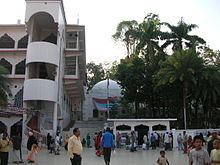 | ||
Title (المجرد) (شيخ المشايخ) Shaykh-al-Mashaykh, Al-Mujarrad Khalifa Period in office Late 13th century to early 14th century Post Sufi scholar and mystic | ||
Hazrat shah jalal hazrat shah poran mazar sharif sylhet bangladesh
Shāh Jalāl ad-Dīn al-Mujarrad al-Naqshbandi (Arabic: شاه جلال الدين المجرد النقشبندي), popularly known as Hazrat Shah Jalal (Arabic: شاه جلال, Bengali: শাহ জালাল, Sylheti: ꠡꠣꠢ ꠎꠣꠟꠣꠟ) (1271 CE – 15 March 1346 CE), is a celebrated Sufi Muslim figure in Bengal. Jalal's name is associated with the spread of Islam into north-eastern Bengal through Sufism, part of a long history of travel between the Middle East, Persia, Central Asia and South Asia. According to a tablet inscription found in Amberkhana, he arrived at Sylhet in 1303 CE. The largest airport in Bangladesh, Hazrat Shahjalal International Airport, is named after him.
Contents
- Hazrat shah jalal hazrat shah poran mazar sharif sylhet bangladesh
- Hazrat shah jalal mujarrad al yemeni r a mazar e sharif sylhet bangladesh
- History
- Early life and education
- Travel to India
- Later life
- Spiritual Genealogy
- Eponyms
- References
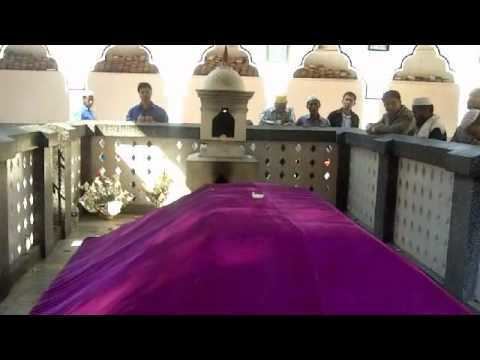
Hazrat shah jalal mujarrad al yemeni r a mazar e sharif sylhet bangladesh
History
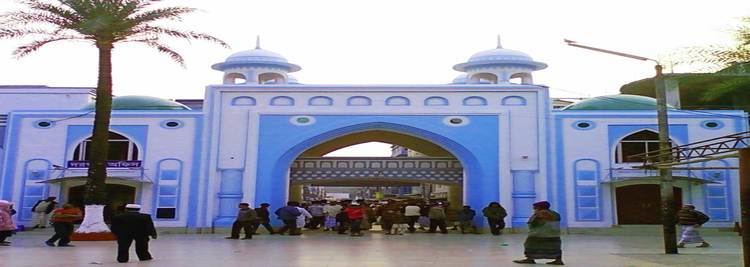
His biography was first recorded in the mid 16th century by a certain Shaikh 'Ali (d. 1562), a descendant of one of Shah Jalal's companions. Thus there is a gap of several centuries between the life of the saint and that of his earliest biographer. According to this account, Shah Jalal had been born in Turkestan, where he became a spiritual disciple of Saiyid Ahmad Yasawi, one of the founders of the Central Asian Sufi tradition. Therefore, although his existence is not debated, much of his life story is debated.
Early life and education
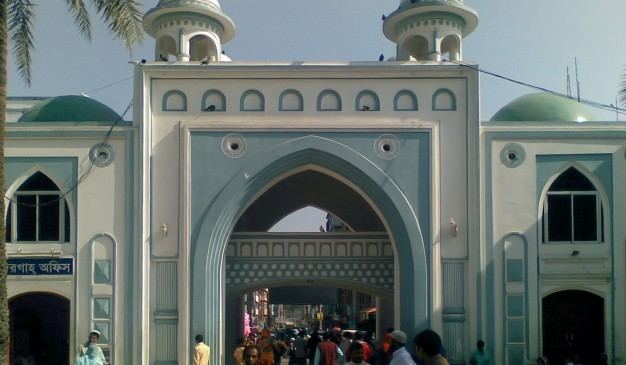
Born Jalāl ad-Dīn bin Mahmoud and became a makhdoom, teacher of Sunnah and, for performing prayers in solitary milieu and leading a secluded life as an ascetic, al Mujarrad was postfixed to his name. He was conferred with the title of Shaykh-ul-Mashāykh (Great Scholar). Shah Jalal's date and place of birth is not certain. Various traditions and historical documents differ. A number of scholars have claimed that he was born in 1271 CE in Konya in modern-day Turkey (then in the Sultanate of Rûm) and later moved to Yemen either as a child or adult while many believe he was born in a village called Kaninah in Hadhramaut, Yemen. His mother, Syeda Hasina Fatimah, and his father, Mahmoud bin Mohammed bin Ibrahim, were descendants of Hashemite dynasty of Quraysh of Mecca. His father was a Muslim cleric, who was a contemporary of the Persian poet and Sufi mystic, Jalal ad-Din Muhammad Rumi. Shah Jalal was educated and raised by his maternal uncle Syed Ahmed Kabir in Mecca. He excelled in his studies; became a hafiz and mastered fiqh. He achieved spiritual perfection (Kamaliyyat) after 30 years of study, practice and meditation.
Travel to India
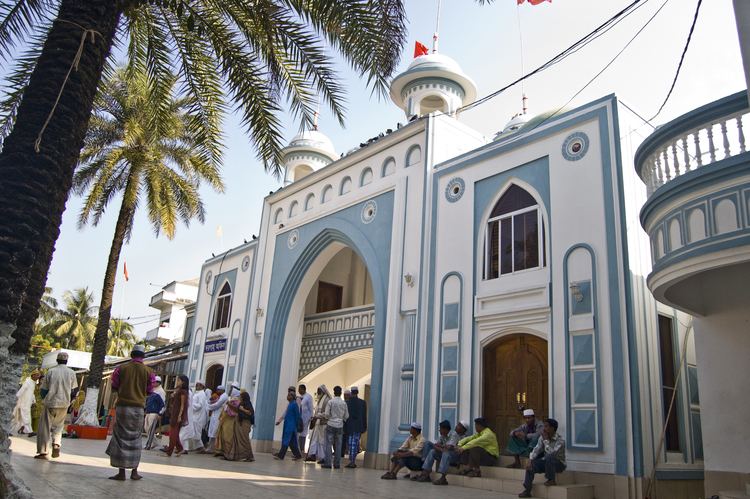
According to legend, one day his uncle, Sheikh Kabir gave Shah Jalal a handful of soil and asked him to travel to India. He instructed him to choose to settle and propagate Islam in any place in India where the soil exactly matches that which he gave him in smell and colour. Shah Jalal journeyed eastward and reached India in c. 1300, where he met many great scholars and Sufi mystics.
Later life
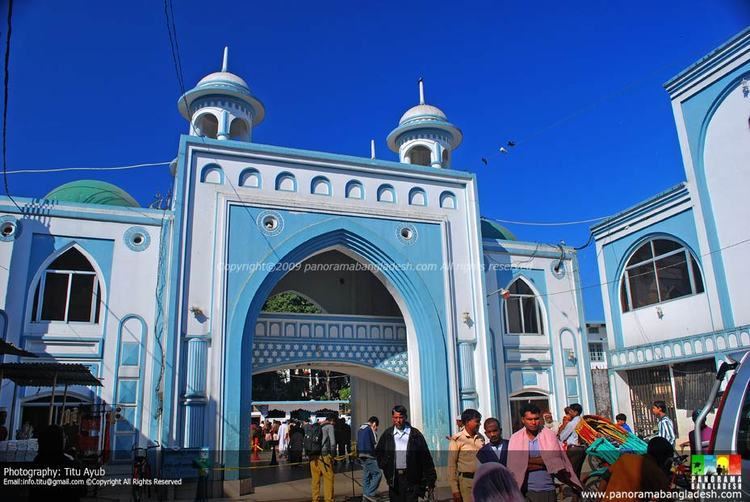
During the later stages of his life, Shah Jalal devoted himself to propagating Islam. Shah Jalal became so renowned that the famous traveller Ibn Battuta, then in Satgaon, made a one-month journey through the mountains of Kamarupa north-east of Sylhet to meet him. On his way to Sylhet via Habung, Ibn Batuta was greeted by several of Shah Jalal's disciples who had come to assist him on his journey many days before he had arrived. At the meeting in 1345 CE, Ibn Batuta noted that Shah Jalal was tall and lean, fair in complexion and lived by the mosque in a cave, where his only item of value was a goat he kept for milk, butter, and yogurt. He observed that the companions of the Shah Jalal were foreign and known for their strength and bravery. He also mentions that many people would visit the Shah to seek guidance.
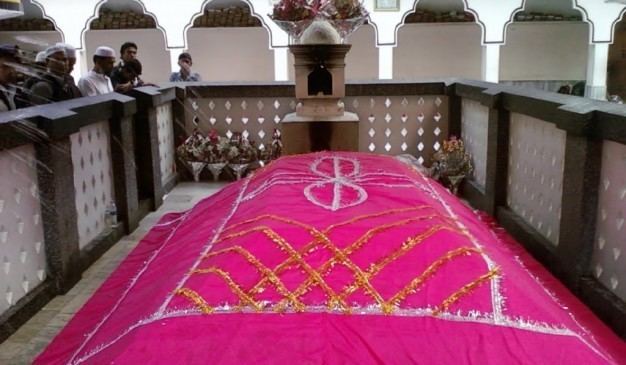
The meeting between Ibn Batuta and Shah Jalal is described in his Arabic travelogue, Rihla (The Journey). Amir Khusrau also gives an account of Shah Jalal's conquest of Sylhet in his book Afdalul Hawaade. Even today in Hadramaut, Yemen, Shah Jalal's name is established in folklore.
The exact date of his death is debated, but he is reported by Ibn Batuta to have died on 20 Dhul Qadah 746 AH (15 March 1346 CE). He left behind no descendants and was buried in Sylhet in his dargah (tomb), which is located in a neighbourhood now known as Dargah Mahalla:
His shrine is famous in Sylhet and throughout Bangladesh, with hundreds of devotees visiting daily. The largest mosque in Sylhet was built at the Dargah (also one of the largest in Bangladesh).
Spiritual Genealogy
Spiritual genealogy of Shah Jalal is as follows:
